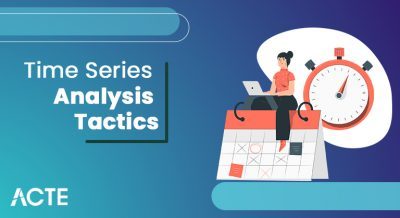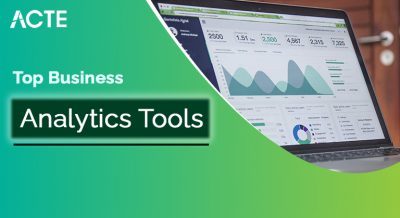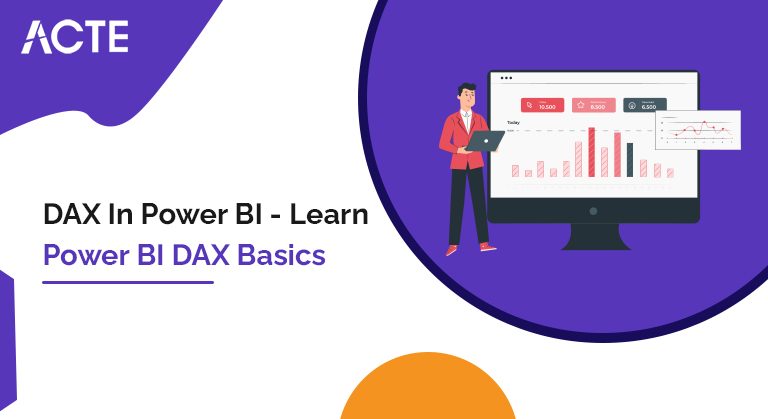
Data Analysis Expressions (DAX) is a programming language that is used throughout Microsoft Power BI for creating calculated columns, measures, and custom tables.
- Introduction to DAX in Power BI
- Importance of DAX in Power BI
- DAX Formula – Syntax
- DAX Calculation Types
- DAX Functions
- Types of DAX functions
- DAX Context
- Creating a Measure Formula using DAX
- Conclusion
- DAX is a useful language i.e. its entire code is usually a characteristic.
- DAX formulation have number one statistics sorts; Numeric and Non-numeric or Others. The numeric statistics kind consists of integers, decimals, currency, etc. Whereas, the non-numeric includes strings and binary objects.
- DAX expressions are evaluated from the innermost characteristic going to the outermost one on the last. This makes formulating of a DAX components important.
- You can use values of blended statistics sorts as inputs in a DAX components and the conversion will take area mechanically all through execution of the components. The output values can be transformed into the statistics kind you advised for the DAX components.
Introduction to DAX in Power BI
DAX stands for Data Analysis Expressions i.e. such expressions or formulation which can be used for statistics evaluation and calculations. These expressions are a set and mixture of functions, operators, and constants which can be evaluated as one components to yield results (cost or values). DAX formulation are very beneficial in BI equipment like Power BI as they assist statistics analysts to apply the statistics units they must the fullest potential.With the assist of the DAX language, analysts can find out new methods to calculate statistics values they have got and give you clean insights.Have a study a few key factors approximately DAX for you to assist you apprehend the idea better:-
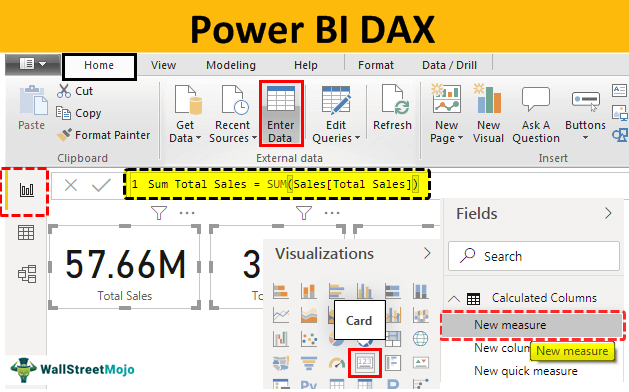
- It is herbal to assume why DAX is so critical to study for running effectively on Power BI. Well, as we’ve got visible in our preceding tutorials, making reviews the use of the functionalities of information importing, reworking and visualizing in Power BI is a clean experience. A consumer desires to have primary know-how of Power BI Desktop to create a first rate document with all of the to be had information. But, in case you need to degree up and use superior calculations for your Power BI reviews, you want DAX.
- Let’s say you need to make a visible to investigate boom percent throughout special states of a rustic or want to evaluate yr-over-yr boom/sales. The information fields which you import in a information desk are normally now no longer sufficient for use for such purposes.
- For this, you want to make new measures the use of DAX language. In this manner, you could create new measures, use them for developing special visualizations, and feature precise insights into information. With such precise insights into information, you could have becoming answers for the enterprise issues which you would possibly leave out with the same old manner of evaluation. Thus, DAX makes information evaluation the use of Power BI, a clever and smart approach.
Importance of DAX in Power BI
- It is the call of the brand new measure (Projected Sales 2019).
- It is the equals sign (=) that is an operator indicating the begin of the DAX components and equating the 2 sides.
- It is the DAX feature used to feature the values of a given discipline (Total Sales 2018) from a desk (Sales). The feature used right here is SUM.
- The parenthesis () is used to surround and outline arguments in an expression. Every feature need to have at the least one argument.
- It is the call of the desk from which a discipline or column is taken withinside the components (Sales).
- It is the call of the sphere from which the components will use the values. For instance, the feature SUM will practice itself at the values of the column or discipline [Total Sales 2018] of the desk Sales.
- It is any other operator used for multiplication. Although, the syntax factors from A to F constitutes the primary syntax of DAX.
- Thus, in less complicated words, this DAX components instructions the gadget to calculate the fabricated from sum of the values in Total Sales 2018 and 1.08 (8% increase) and shop the fee in a brand new discipline or column called Projected Sales 2019.
DAX Formula – Syntax
The preliminary and maximum vital step in getting to know any language is to interrupt it down into definitive factors and apprehend its factors. And, this is why we observe the syntax of a language. Given beneath is an instance of the DAX components. We will apprehend this components and its syntax factors with the assist of this instance.We have defined every syntax detail classified withinside the photograph withinside the factors beneath:-
- Calculated Columns: The calculated columns create a brand new column on your current desk. The simplest distinction among a everyday column and a calculated column is that it’s miles essential to have at the least one characteristic withinside the calculated column. These are used whilst you need to create a column with filtered or looked after information.
- To create a calculated column:
- Then pick New Column option.You can update the “Column” phrase with the column call you need.
- After this, input the expression for the calculated column at the proper of the equals to sign.
- Calculated Measures: A calculated degree creates a discipline having aggregated values the sort of sum, ratios, percentages, averages, etc.
- To create a calculated degree:
- Then pick New Measure option.You can update the “Measure” phrase with the degree call you need.
- After this, input the expression for the calculated degree at the proper of the equals to sign.
- Once you create the degree, you may alter your degree call with a calculator icon subsequent to it, beneathneath the desk call you created the degree in.
DAX Calculation Types
You can create forms of expressions or calculations the usage of DAX in Power BI; calculated columns and calculated measures:-
- Any DAX characteristic usually refers to a entire column/area or a desk. It will in no way check with person values. If you need to apply the capabilities on separate values inside a column, you want to use filters in a DAX system.
- DAX capabilities offer the ability to create a system this is implemented on a row-by-row basis. The calculations or formulation get implemented as in line with the context of the values in every row.
- In a few cases, DAX capabilities go back a complete desk which may be utilized in different DAX formulation that want a entire set of values. However, you can’t show this desk’s contents.
- DAX capabilities have a class referred to as time intelligence capabilities. Such capabilities are used to calculate time/date levels and periods.
DAX Functions
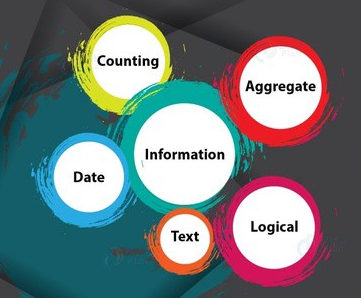
Here are a few precise information approximately DAX capabilities which you should understand in an effort to apprehend them better:-
- CALENDAR
- CALENDARAUTO
- DATE
- DATEDIFF
- DATEVALUE
- DAY
- EOMONTH
- HOUR
- MINUTE
- MONTH
- NOW
- SECOND
- TIME
- TIMEVALUE
- TODAY
- WEEKDAY
- WEEKNUM
- YEAR
- YEARFRAC
- The time-intelligence features are used to assess values over a set length which include days, weeks, months, quarter, years, etc. You can specify a term the usage of those features and evaluate eventualities to your report.
- CLOSINGBALANCEMONTH
- CLOSINGBALANCEQUARTER
- CLOSINGBALANCEYEAR
- DATEADD
- DATESBETWEEN
- DATESINPERIOD
- DATESMTD
- DATESQTD
- DATESYTD
- ENDOFMONTH
- ENDOFQUARTER
- ENDOFYEAR
- FIRSTDATE
- FIRSTNONBLANK
- LASTDATE
- NEXTQUARTER
- LASTNONBLANK
- NEXTDAY
- NEXTMONTH
- The statistics features are used to offer sure statistics at the facts values contained in rows and columns. It evaluates the given circumstance in a characteristic for the price given and go back TRUE or FALSE. For instance, the characteristic ISERROR will go back TRUE if the price evaluated includes an error.
- CONTAINS
- CUSTOMDATA
- IN Operator / CONTAINSROW characteristic
- ISBLANK
- ISERROR
- ISEVEN
- ISINSCOPE
- ISLOGICAL
- ISNONTEXT
- ISNUMBER
- ISODD
- ISONORAFTER
- ISTEXT
- LOOKUPVALUE
- USERNAME
- The logical features are used to assess an expression or argument logically and go back TRUE or FALSE if the circumstance is met or not.
- AND
- FALSE
- IF
- IFERROR
- IN
- NOT
- OR
- SWITCH
- TRUE
- The mathematical and trig features are used to carry out all varieties of mathematical features at the referred values. Given below, is a listing of all of the to be had math and trig DAX features in Power BI.
- ABS
- ACOS
- ACOSH
- ASIN
- ASINH
- ATAN
- ATANH
- CEILING
- COMBIN
- COMBINA
- COS
- COSH
- CURRENCY
- DEGREES
- DIVIDE
- EVEN
- EXP
- FACT
- FLOOR
Types of DAX functions
Date and Time Functions: The date time features perform calculations at the date and time values. The facts sort of those values is continually datetime facts type:-
Time Intelligence Functions:
Information Functions:
Logical Functions:
Mathematical and Trigonometric Functions:
- Row context: Row context method thinking of a particular row that has been filtered in a DAX expression. The row context makes a speciality of the operation of the formulation at the modern-day row. This form of context is most usually carried out to the degree rows.
- Filter context: The clear out out context takes that specialize in values one step ahead. In row context, we have been filtering out and making use of operations on particular rows. But in clear out out context, the expression applies a clear out out to consciousness on particular values inside a row. Thus, the clear out out context is carried out similarly to the row context to slim down the scope of calculation to particular values. Filter context is carried out while we use capabilities like CALCULATE, FILTER, RELATED, ALL, etc.
DAX Context
The idea of DAX context is critical in gaining a whole expertise of DAX language and the way it works in Power BI. There are styles of DAX contexts; Row context and Filter context:-
- Step 1: To create a degree the usage of the DAX method, open your Power BI Desktop app. In the Power BI Desktop, you could create a brand new degree in ways. One, right-click on at the desk’s call in that you desire to feature the degree subject and choose New degree.
- Step 2: In the method bar, begin with coming into the call of your new degree. In the intended scenario, we’re the usage of the call ProjectedSales201.
- Step 3: Next, input the call of the feature which you need to use. Start typing the call of the feature and tips will seem withinside the list. A small segment displaying an outline of the feature you chose may even seem. Notice withinside the photograph beneathneath wherein we’ve got decided on the SUM feature.
- Step 4: Then, placed a parenthesis “()” and write the call of the desk or column you’re referring to.
- Step 5: You also can specify a column inside that desk. The feature will observe to the values withinside the decided on column. Close the parenthesis.
- Step 6: Further, you could upload greater operators, different functions, constants to growth the complexity of the method.
- The DAX method that we created will create a brand new degree named “ProjectedSales2019”.
- Here, we’ve got elevated the sum of preceding yr’s (2018) income through 1.08 due to the fact an growth in income through 8% is anticipated withinside the yr 2019. This will supply us the projected income for the yr 2019.
- Step 7: Save this and your newly created degree will seem withinside the Fields column beneathneath the desk Sales. Every degree subject created like this has a calculator icon beside it.
Creating a Measure Formula using DAX
Conclusion
With this, we finish our article on DAX in Power BI. We wish the facts supplied right here become beneficial sufficient to provide you a essential understanding of DAX formulas. You can create any logically sound DAX system with the aid of using the usage of the present columns and tables for your Power BI to make greater exact and superior reports.


